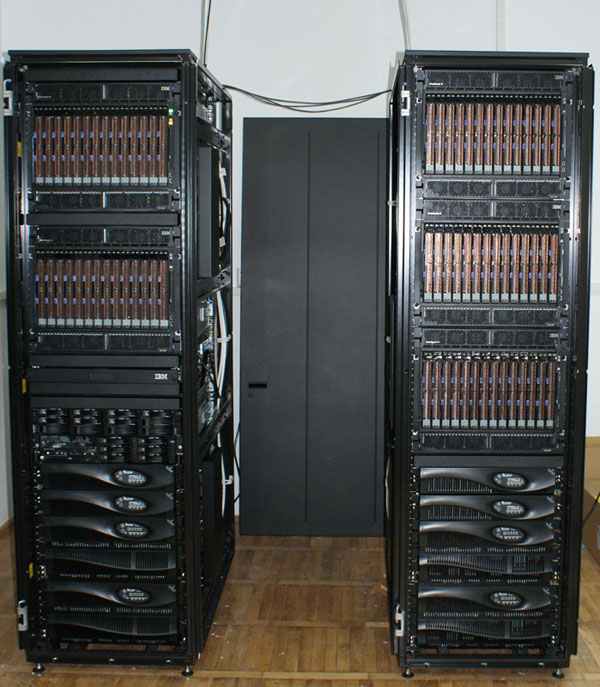
RO | EN
Center for Molecular Modeling and Quantum Computational Chemistry
CMMCCC
Programme: CAPACITATI , 130/14.09.07
Category: I, P1
CO- Babes-Bolyai University Cluj Napoca,
Project Manager, Prof.Dr. Ioan Silaghi-Dumitrescu
P1- Technical University Cluj-Napoca,
Project Responsible, Sl. Dr. ing. Ovidiu Nemes
| Contracting authority: | National Authority for Scientific Research |
| Financing: | State Budget – National Authority for Scientific Research |
| Durata contract: | 2007-2009, 24 MONTHS |
| Contract value: | 14 000 000 |
| Contract partners: | Technical University Cluj-Napoca |
ABSTRACT OF THE PROJECT
Molecular modeling has become lately an instrument in the hand of the chemist not at all different from any other means to explore the chemical behavior of molecular systems. The emergence of more and more versatile software combined with that of machines with growing computing abilities (estimated to be aprox 2000000 faster than those in the 1960s) made it possible to approach some of the most complex problems of molecular structure and dynamics. Molecular modeling thus enables the study of systems of sizes going from tens of atoms (like in simple catalytic methods) to thousands of atoms (constituted in macromolecules like enzymes and polymers). This project has as purpose the growth of the Molecular Modeling Laboratory within the framework of the Centre of Excellence in Organometallic Chemistry, Babes-Bolyai University to the level of a centre in applied quantum chemistry and molecular modeling, that would make it self available to potential users in UBB and the Technical University Cluj-Napoca (UTC). The basis of the proposal is the increase of the interest in the molecular modeling area in both institutions – increase explained by the advantages that the application of these methods are bringing, including the rapidity in finding optimal solutions in different stages of research projects.
The augmentation of the laboratory involves the acquisition of 48 central processing units with powerful/fast computing abilities and their configuration into an array that can be integrated in a regional computing network in the future. The 48 processing units would constitute a parallel computing node, in order to immediately enable us to gain free access to some of the most powerful molecular modeling software based on parallel computing currently used worldwide(like ECCE/NWCHEM from the Pacific National Laboratory and other software quoted below in the project presentation).
The main outcome of this integrated array would translate in the following economical-social vectors:
- the increase of efficiency in research by decreasing the time of in which the results are obtained;
- cutting down expenses for materials, seeing that process modeling/simulation will allow to skip several experimental stages during the research projects;
- minimizing the pollution and improving the quality of the environment – by replacing “in vitro” experiments with “in silico” ones;
- strengthening the collaboration between research workgroups from the two institutions involved by increasing the ratio of interdisciplinary research facilitated by this centre;